I tried to make solver for flow game using google-OR tools.
I made a few rules for the corner to only contains corner pipes, but other than that, i can not figure out how to make the pipe connected to each other nor how to tell the model to make a pipe that is connecting to each other.
A few snippet
pipe_types = {
0: " ",
1: "-",
2: "|",
3: "┗" ,
4: "┛" ,
5: "┓",
6: "┏",
7: "●"
}
model = cp_model.CpModel()
filled_map = [[0,0,0,0],
[0,0,7,0],
[0,0,0,0],
[0,7,0,0]]
mesh_size = int(np.sqrt(len(np.array(filled_map).flatten())))
target_map = [[model.NewIntVar(1, 6, 'column: %i' % i) for i in range(mesh_size)] for j in range(mesh_size)]
flow_map = init_map(model, target_map, filled_map)
for i in range(len(flow_map)):
for j in range(len(flow_map[0])):
# check if top or bottom side
if (i == 0) or (i == len(flow_map)-1):
model.Add(flow_map[i][j] != 2)
# check if left or right side
if (j == 0) or (j == len(flow_map[0])-1):
model.Add(flow_map[i][j] != 1)
# left up corner
if (i == 0) & (j == 0):
model.Add(flow_map[i][j] != 3)
model.Add(flow_map[i][j] != 4)
model.Add(flow_map[i][j] != 5)
# right up corner
if (i == 0) & (j == len(flow_map[0])-1):
model.Add(flow_map[i][j] != 3)
model.Add(flow_map[i][j] != 4)
model.Add(flow_map[i][j] != 6)
# left bottom corner
if (i == len(flow_map)-1) & (j == 0):
model.Add(flow_map[i][j] != 4)
model.Add(flow_map[i][j] != 5)
model.Add(flow_map[i][j] != 6)
# right bottom corner
if (i == len(flow_map)-1) & (j == len(flow_map[0])-1):
model.Add(flow_map[i][j] != 3)
model.Add(flow_map[i][j] != 5)
model.Add(flow_map[i][j] != 6)
# Solving
status = solver.Solve(model)
res = []
if status == cp_model.OPTIMAL or status == cp_model.FEASIBLE:
for i in range(len(flow_map)):
for j in range(len(flow_map[0])):
res.append(solver.Value(flow_map[i][j]))
print(solver.Value(flow_map[i][j]), end=" ")
print()
This would results horizontal pipes on the center of the mesh. Later on, i would have to figure out how to add color and such on this too.
Is there any pointer on how to make this on OR tools?
Edit 1:
Based on David Eisenstat's answer, I can find solution. Visualizing this solution based on JohanC's answer, I get this result.
Can I get the pathing made from google-OR tools?
Edit 2:
Using hamilton path from "Hamiltonian" path using Python I could generate somewhat correct pathing.
But it feels so weird since OR tools already calculate the pathing, and I have to recalculate the path. The path generated from "Hamiltonian" path using Python doesn't show all possible combinations. If I can take the path from OR tools, I think that would be my best interest.



